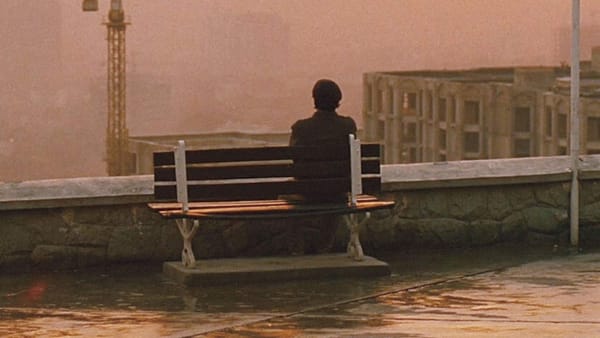Rethinking and Reimagining Cinema
On the picks for February 2024, reimagining film through a lens of form, abstraction, and the profound weight of life and death.

Cinema had always been vulnerable to a threat. Despite its popularity, one might wonder what threat it is and do we even understand the gravity of it. The rather contemporary arrival of cinema, much later than sculpting, dance, music, literature, and painting leaves it open to be a product of reduction. At TPCC, my challenge has consistently been to emphasize cinema as a unique form, resisting deductions that assimilate it into other art forms. Understanding how cinema deviates from other art forms and what novel contributions it makes is crucial.
The danger of neglecting the analysis of filmic form is that what remains may already exist in those other media of art or literature. The dimension of time introduces a unique mise-en-scene and editing, yet discussions around cinema often focus on character and plot analysis.
The films selected for this month emphasize the importance of analyzing cinema through images, cuts, or the absence thereof. Each week, at least one film places significant importance on drama. However, by filtering it through new ideas of conduction, the focus shifts to the form of the film—the abstract nature of understanding shaped by light through time, or more concretely, through temporal changes in color, movement, performance, and sound.
The intention is to move away from academic analyses and not just in the interpretation but also in the dramatization itself. Festivals, schools, and clubs have traditionally tackled cinema from an academic standpoint. All the films this month are bringing the process back to essentials while exploring new aesthetic developments, and in some cases, radical approaches (such as Azevedo Gomes’ cinema as a process, Hong’s digital approach to film, Wang’s purely observational yet revelatory eye, Bresson and Torgal/Pimenta’s musical montage—Deleuzian blocks and self-emphasis, and finally, Garrel and Yoshida’s abstraction of history—fracturing and perspiration of stories through faces and bodies). As Godard would quote André Chénier, "From new thoughts, let us write old verses."
Cinema is not merely about utilizing the potential of fiction but consistently seeking new forms for it, letting stories venture somewhere through the filmmaking process and return anew through the camera. It is also not a coincidence that the films curated for this month share a profound understanding of the weight of life and death—essential aspects that substantive art must encompass. Every shot and every cut is a gesture that is aware of these two elements, as cinema is not about futile beauty but about capturing every ounce of life and death through a camera and realizing how a camera alone can register it.
Week 1


Week 2

Week 3


Week 4






